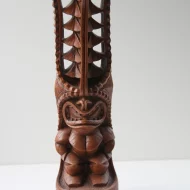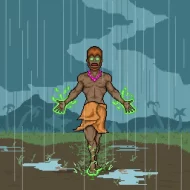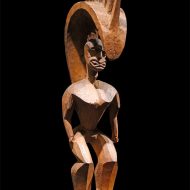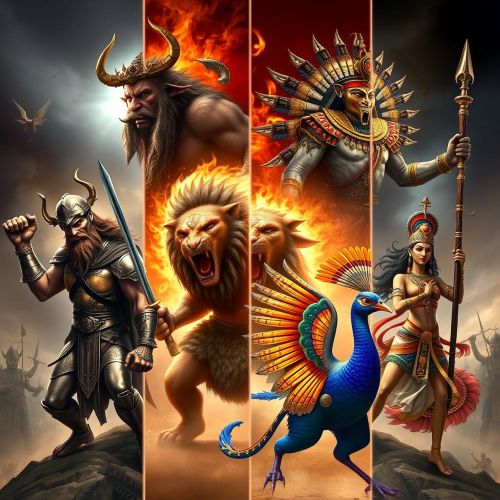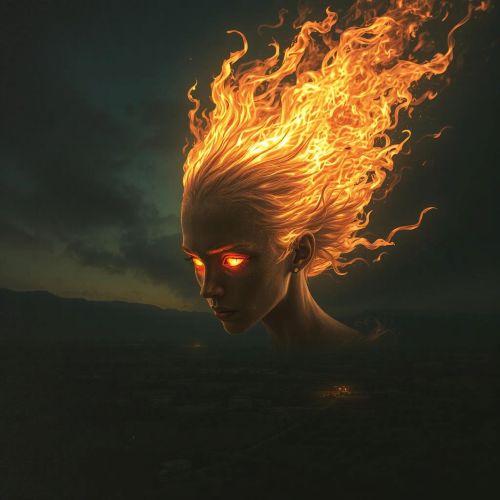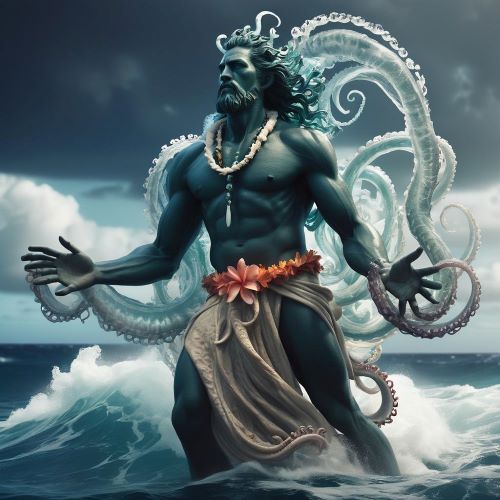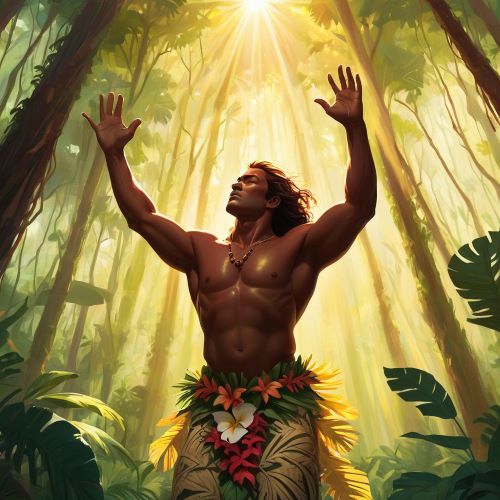Lono : The God of Agriculture
Listen
At a glance
| Description | |
|---|---|
| Origin | Polynesian Mythology |
| Classification | Gods |
| Family Members | Papatuanuku (Monther), Ranginui (Father), Ku, Kane (Brothers) |
| Region | Hawaii |
| Associated With | Agriculture, Rain, Water, Fertility, Earthquakes, Thunder, Lightning |
Lono
Introduction
One of the most common stories in Hawaiian folklore is about Lono, who was a fertility and music god who came to Earth to marry Laka. In traditional planting and agricultural traditions, he was regarded as a food and rain god. He was one of the four gods that existed before the world was made, alongside Kane, Kanaloa, and Kane’s twin brother. During the annual festival of the Makahiki, which was held from October through February, war and unnecessary work were kapu (forbidden).
The winter storms that frequently hit the islands of Hawaii are often associated with Lono. In terms of Hawaiian weather, the storms that bring rain to certain areas are referred to as Lono-makua, which literally means “Lono the Provider.” During the various ceremonies held during the Makahiki, the luakini, which was a temple dedicated to Ku, was dedicated to the strict kapus.
Family
Following the separation of Papa and Rangi, Lono used a net to catch the moon and sun and send them into orbit. When it came to creating humans, he gave his brother Ku the fertile soil to nourish their bodies. Kane then used his brother’s body to breathe life into the humans.
Lono loved to surf and rainbow, which is how he met Kaikilani. Their relationship was intense, and he would frequently be jealous of her. He also believed that she was unfaithful once, so he would often strike her down using his divine powers.
Other Names
Lono is also known as Lono-nui-noho-i-ka-wai
Powers and Abilities
In old Hawai’i, people offered prayers to Lono for bountiful harvests, adequate rainfall, and protection from famine and droughts. During the annual Makahiki festival, which was held in honour of Lono, people offered their blessings at heiau ipu or hale o Lono. These were constructed at the boundary of ahupua’a.
In addition to heavy rain, thunder, and lightning, Lono is also represented by earthquakes, waterspouts, whirlwinds that sweep the earth, and flowing springs on the mountains. Some of the other kino lau that are associated with Lono include red fish, white fish, black coconut, and ‘awa.
Many chants refer to rain clouds as “kino” of Lono. The cultivation of sweet potato lands, which were dependent on winter rains, was also associated with Lono in his form, which was referred to as Kamapua‘a. In humorous terms, ancestors of the modern Hawaiians called the humble ‘uala the “droppings” of Kamapua‘a.
Modern Day Influence
One of the stories that is related to Lono is the story of James Cook, an English explorer who was the first European to visit the islands of Hawaii. Upon his arrival, people assumed that he was the god Lono, so they escorted him to their temple. This confirmation of his presence proved that he was indeed Lono.
The Hawaiians believed that Lono would supposedly die and then leave them. When Cook went back to the islands, the Hawaiians killed him to ensure that Lono would also die as he was supposed to.
Related Images
Source
Wikipedia Contributors. “Lono.” Wikipedia, The Wikimedia Foundation, 15 Dec. 2023, https://en.wikipedia.org/wiki/Lono.
Kumukahi. “Lono.” Kumukahi, 2023, https://www.kumukahi.org/units/ke-ao-akua/akua/lono.
Ka Wai Ola. “The Many Blessings of Lono.” Ka Wai Ola, 14 Jan. 2022, https://kawaiola.news/moomeheu/the-many-blessings-of-lono/.
Ka Wai Hāpai. “Lono.” Ka Wai Hāpai, University of Hawai’i, 2023, https://www.hawaii.edu/kawaihapai/akua-list/lono.
British Museum. “Lono.” The British Museum, 2023, https://www.britishmuseum.org/collection/term/BIOG213696.
Sacred-Texts. “Hawaiian Myths: Lono.” Sacred-Texts, 2008, https://sacred-texts.com/pac/hm/hm05.htm.
Frequently Asked Questions
What is Lono the god of?
Lono is a prominent god in Hawaiian mythology, associated with fertility, agriculture, rainfall, music, and peace. He is revered for his role in ensuring bountiful harvests, adequate rainfall, and the overall well-being of the land and its people.
What did Lono look like?
Is Lono a man?
In Hawaiian mythology, Lono is often depicted as a male deity. He embodies the qualities of fertility, agriculture, rainfall, music, and peace. His representation as a man reflects his role as a benevolent and nurturing god, overseeing the well-being of the land and its people.
Where did Lono live?
In Hawaiian mythology, Lono is believed to reside in the heavens, often associated with the celestial realm. He descends to Earth during the annual Makahiki festival, a time of peace, celebration, and agricultural abundance.
What is the significance of the Makahiki festival in relation to Lono?
The Makahiki festival is a significant event in Hawaiian culture, dedicated to honoring Lono, the god of fertility, agriculture, rainfall, music, and peace. This annual festival marks a period of celebration, rest, and renewal, usually lasting several months. During Makahiki, war and conflict are set aside, and people engage in various sports, games, feasts, and religious ceremonies.

